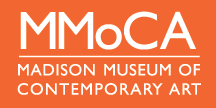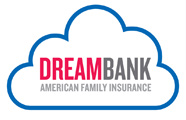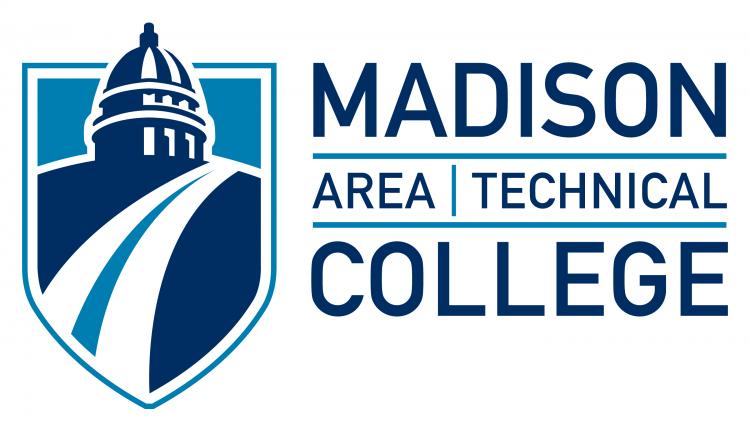
- This event has passed.

November 16, 2016 @ 12:00 am
Event Navigation
When it comes to building successful websites and social media sites, it’s great to create quality content about yourself, but it’s way better to create quality content about your audience.
That was one of the many tips that came from our “million dollar panel” of social media experts Wednesday at the Social Media Breakfast Madison event in downtown Madison. Appearing before a live audience at the Madison Museum of Contemporary Art, the panel assessed the strengths and weaknesses of websites and social media sites for two area non-profits that had volunteered to be put under the microscope – the National Alliance on Mental Illness Wisconsin Chapter and the Dane County Humane Society.
The panel was extremely complimentary of all the sites and congratulated the staff of these non-profits for doing an excellent job with limited resources. The audience found the exercise extremely valuable because taking a critical look at specific sites like these provides perspective and gives all of us an opportunity to rethink some of the things we are doing with our sites.
In the end, it all came down to tapping the expertise of the panel, so here – in no particular order – is a list of some of their top insights:
- Leverage video. About 63% of all content consumed online this year will be video. Look at incorporating more video. Post short videos on social media and then send viewers to your website for more information.
- Use video on social media as a hook to drive people to your website, where people can take an action such as purchasing a product or at least providing you with their email address.
- Have a prominent Call to Action on your website – perhaps a big Donate button – and sometimes within your social media posts.
- Run a speed check on your website and correct any issues that might be slowing it down. Often Javascript, large images or poor CSS coding is at fault. People don’t want to wait more than 3 seconds for a page to load. “Fix the speed issues and then start driving traffic.” Use GTmetrix or Pingdom to check your website speed.
- Make sure your website is not only fast but that it’s mobile friendly.
- Don’t clutter your website with secondary information. Remove things that are not important or that don’t focus on your goals.
- Consider using Facebook Live to answer folllowers’ questions. Having a regular schedule (like once a week) for a Facebook Live session will give it structure and help draw an audience. It may take a while for your audience to get accustomed to using Facebook Live but at some point you’ll likely “cross a chasm” and it will take off.
- Post videos that take people behind the scenes at your non-profit.
- Specifically for the Humane Society, as an example, the panel recommended a “Pet a Day” program, inviting people to come and visit animals. This lends itself to a lot of video and photographic opportunities, as well as social engagement.
- Share your mission from time to time to “strike an emotional chord.”
- Dig deep into analytics. With analytics, for example, you can make a connection between a social media post or web post and a donation. Finding out what drives people to donate gives you the information you need to produce more of that kind of content.
- Go to Facebook Insights and find the section for “pages to watch.” Seeing what works for other people will help you determine what will work for you. Then create “mico experiments” using similar content.
- Engage with your audience on social media. When they post something about your organization, comment on it, thank them and follow them.
- Consider running Facebook ads, even if it’s just $5 a day. Use ads on your page to promote something right now and off your page to gain new followers. Find out what is engaging your audience and then pay to “boost” those types of posts.
- If you’re overloaded at work consider hiring an intern to help manage social media.
- Make connections with organizations that are similar to yours and have similar missions and goals and then share their content and ask them to share yours.
- Make micro-posts from content already on your website.
- Create themes for days of the week that will help you shape your content.
- It you have the resources, create a blog. Or find guest bloggers.
- Take the approach of a teacher when writing content: Answer questions that people are asking all the time about your organization.
- If you’re overwhelmed at the thought of finding time to manage multiple social channels, set a timer to allow yourself a specific amount of time on any one channel per day.
- Make a list of your audiences, define them and write up personas for each, then create a Call to Action for each.
- Take different approaches on each social channel. For example, inspirational quotes work well on Instagram. Use Twitter to reach the news media, which has a strong presence on Twitter. “Do one thing really really well on each channel and you’re going to see traction.”
Thanks to our panel of social media experts: Spencer X. Smith, Chelsey Dequaine, Don Stanley, James Roloff, Heather Timmerman, Chris Rudolph.
![]() Written by Bill Hurley, (@billhurleymedia / billhurleymedia.com) Editor, writer, social media strategist, digital publisher. BillHurleyMail@gmail.com, Bill@smbmad.org.
Written by Bill Hurley, (@billhurleymedia / billhurleymedia.com) Editor, writer, social media strategist, digital publisher. BillHurleyMail@gmail.com, Bill@smbmad.org.















